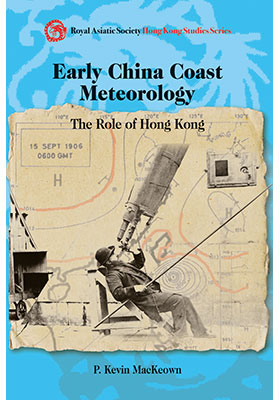Early China Coast Meteorology
The Role of Hong Kong
(香港和南中國氣象學的發展)
ISBN : 978-988-8028-85-6
Royal Asiatic Society Hong Kong Studies Series (皇家亞洲學會香港研究叢書)
January 2011
304 pages, 6″ x 9″
- HK$295.00
Ebooks
Also Available on
In this colourful story of the Hong Kong Observatory, P. Kevin MacKeown takes us through the development of the Observatory in the Crown colony in the period 1882–1912, featuring in particular its nettlesome founding director William Doberck. A Danish astronomer with little interest in meteorology, though eminently qualified for the senior scientific position, Doberck proved to be a very difficult employee—constantly clashing with his superiors, his confreres, and with the commercial community. Despite the antagonism between Doberck and the Jesuit observatories, a successful storm warning system was developed over several years.
MacKeown also introduces the earliest efforts of quantitative meteorology in the region, and documents the additional contributions made by Jesuit observatories at Manila and Shanghai. The study of typhoons and their forecasting was of the greatest importance, and MacKeown details the earliest studies of storms in the China Sea.
Apart from general readers interested in Hong Kong’s history, this book will attract historians of science, especially those familiar with China and with Western colonialism in Asia.
“Professor Kevin MacKeown, an expert researcher and expositor, has written an excellent book. It is a scholarly, perceptive and fascinating account of the foundation and early work of the Hong Kong Observatory. His descriptions of the characters involved are extraordinarily well drawn; reading it is a must.” —Sir Arnold Wolfendale FRS, 14th Astronomer Royal
“This book provides valuable and informative insights into the controversies involving appropriate responses to the protection of life and property in any community when it comes to that ever contentious topic—the weather. All of this is set firmly within the context of the history of Hong Kong as a colony of the British Empire. The author presents a clever blending of personalities, politics, and day-to-day practicalities that is at once very readable, highly informative and entertaining. The storms that rage in the narrative as well as the tragedy of the very real storm of 1906 provide a fine sense of the drama that was being played out both locally and internationally in terms of jealousies and rivalries.” —William J. Kyle, University of Hong Kong





